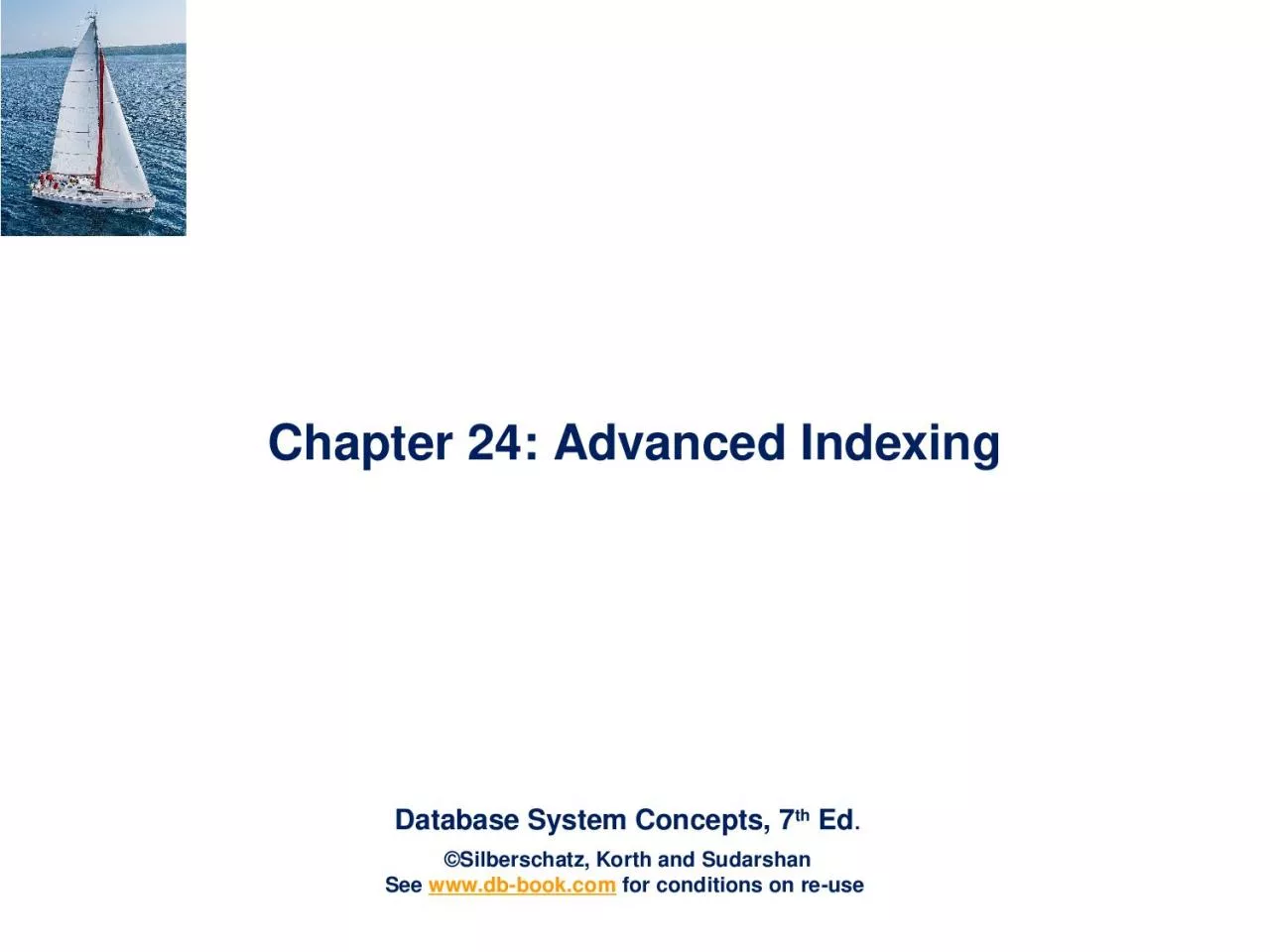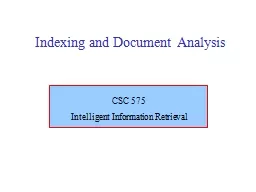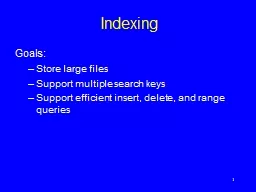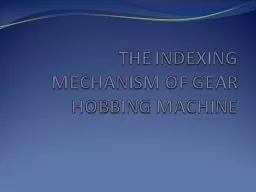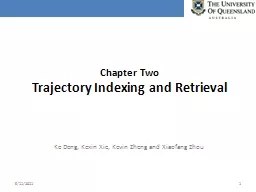PPT-Chapter 24: Advanced Indexing
Author : arya | Published Date : 2023-10-04
Bloom Filters A bloom filter is a probabilistic data structure used to check membership of a value in a set May return true with low probability even if an element
Presentation Embed Code
Download Presentation
Download Presentation The PPT/PDF document "Chapter 24: Advanced Indexing" is the property of its rightful owner. Permission is granted to download and print the materials on this website for personal, non-commercial use only, and to display it on your personal computer provided you do not modify the materials and that you retain all copyright notices contained in the materials. By downloading content from our website, you accept the terms of this agreement.
Chapter 24: Advanced Indexing: Transcript
Bloom Filters A bloom filter is a probabilistic data structure used to check membership of a value in a set May return true with low probability even if an element is not present But never returns false if an element is present. Thomas Gray initially attempted to keep his notebooks in the manner first recommended by the philosopher John Locke in his writings on education According to Lockes method subjects were filed in an index prefixed to each volume by respectively first The essential step in searching. Review a bit. We have seen so far . Crawling . In the abstract and as implemented. Your own code and . Nutch. If you are unsure about anything related to crawling, be sure to speak up now!. The essential step in searching. Review a bit. We have seen so far . Crawling . In the abstract and as implemented. Your own code and . Nutch. If you are unsure about anything related to crawling, be sure to speak up now!. Joel Plutchak. The HDF Group. Champaign Illinois USA. This work was supported by NASA/GSFC under Raytheon Co. contract number . NNG10HP02C. The Technology. The HDF5 hierarchical data file format and API is flexible—it supports self-describing, portable, and compact storage, as well as efficient I/O.. NoSQL PaaS in Azure through . DocumentDB. DAT332. Today’s modern apps. Data. – . unpredictable, rapid growth and consumption. Expectations. – . instance response times. Developed iteratively. School of Computing. National University of Singapore. Department of Computer Science. Aalborg. University. Meihui. Zhang. , Su Chen, Christian S. Jensen, . Beng. Chin . Ooi. , . Zhenjie. Zhang. CSC 575. Intelligent Information Retrieval. Intelligent Information Retrieval. 2. Indexing. Indexing is the process of transforming items (documents) into a searchable data structure. creation of document surrogates to represent each document. Goals:. Store large files. Support multiple search keys. Support efficient insert, delete, and range queries. 2. Files and Indexing. Entry sequenced file. : Order records by time of insertion.. Search with sequential search. on. NoSQL. Databases. (. MongoDB. ). By:. . Avni. Malhan (MT15012). . Karishma. . Tirthani. (MT15027). . Neeti. . Arora. (MT15039). What is . NoSQL. ?. NoSQL Data models. MongoDB. : Brief Overview. Indexing. Indexing . Overview. Two videos on . indexing:. . . . [2:41] [1:49]. Indexing . Overview. Indexing Record Example. Downloading Indexing Tool. Gears. A gear is a wheel with teeth along its rim. . It is used to transmit power from one shaft to another.. Production of Gears. Broaching. Hobbing. Shaping. Milling. Lapping. Plastic Injection Molding . Ke. Deng, . Kexin. . Xie. , Kevin . Zheng. and . Xiaofang. Zhou. 9/06/2016. 1. 2. Chapter Overview. Trajectory Query Classification. Trajectory Similarity Measure. Trajectory Data Index. Trajectory Query Processing. February 2014. I attended a class about the new indexing tool at rootstech14 in February 2014. Let me summarize what I learned for you.. This is Scott Flinders, the presenter. Scott is senior product manager in charge of developing the new indexing tool.. SPL/DailyMed Jamboree - October 2013. Lonnie Smith. U.S. Food and Drug Administration. . Overview. Structured Product Labeling (SPL) Overview. Exchange of SPL Data. Indexing SPL Overview. Other SPL-related topics.
Download Document
Here is the link to download the presentation.
"Chapter 24: Advanced Indexing"The content belongs to its owner. You may download and print it for personal use, without modification, and keep all copyright notices. By downloading, you agree to these terms.
Related Documents

